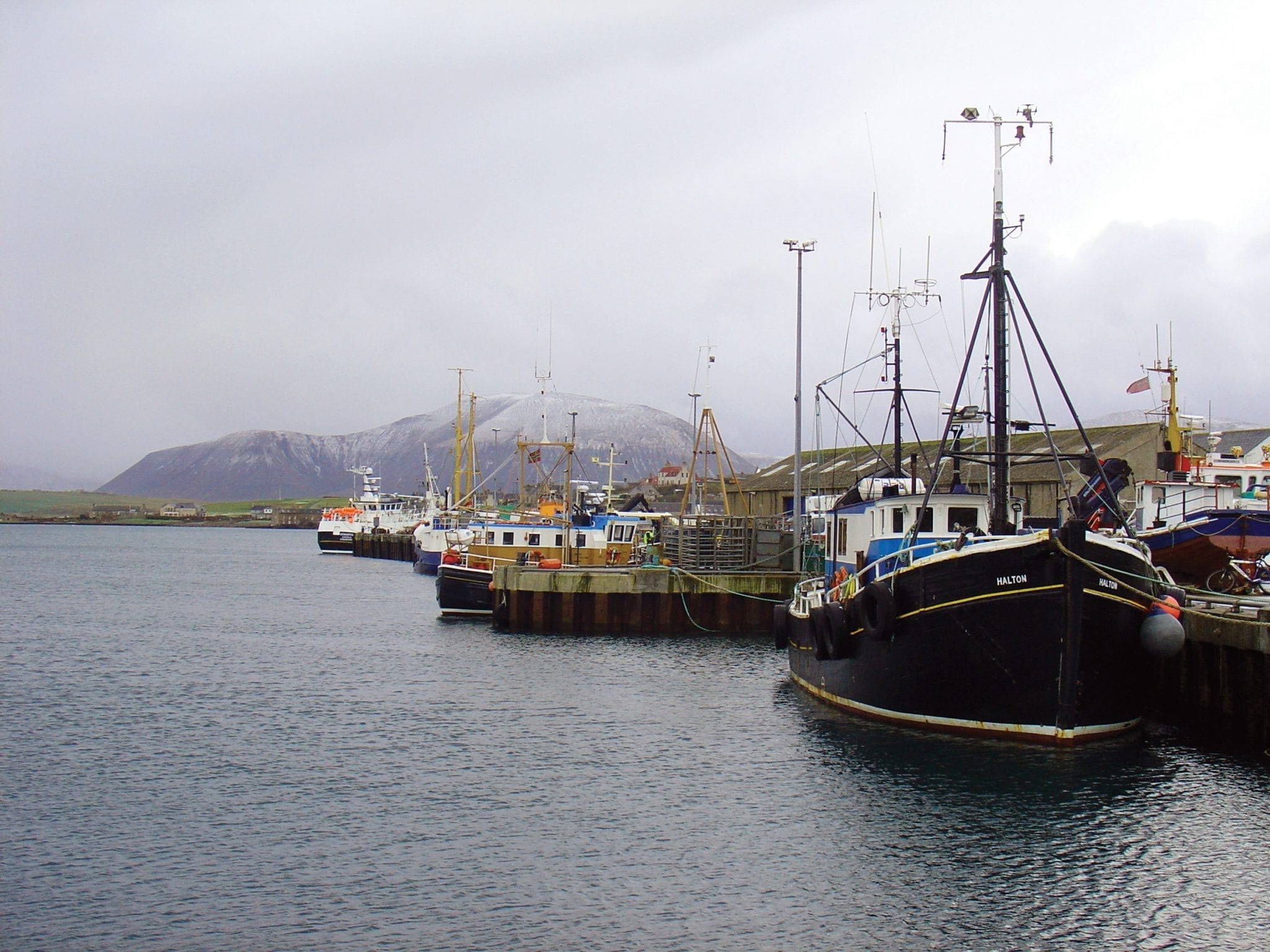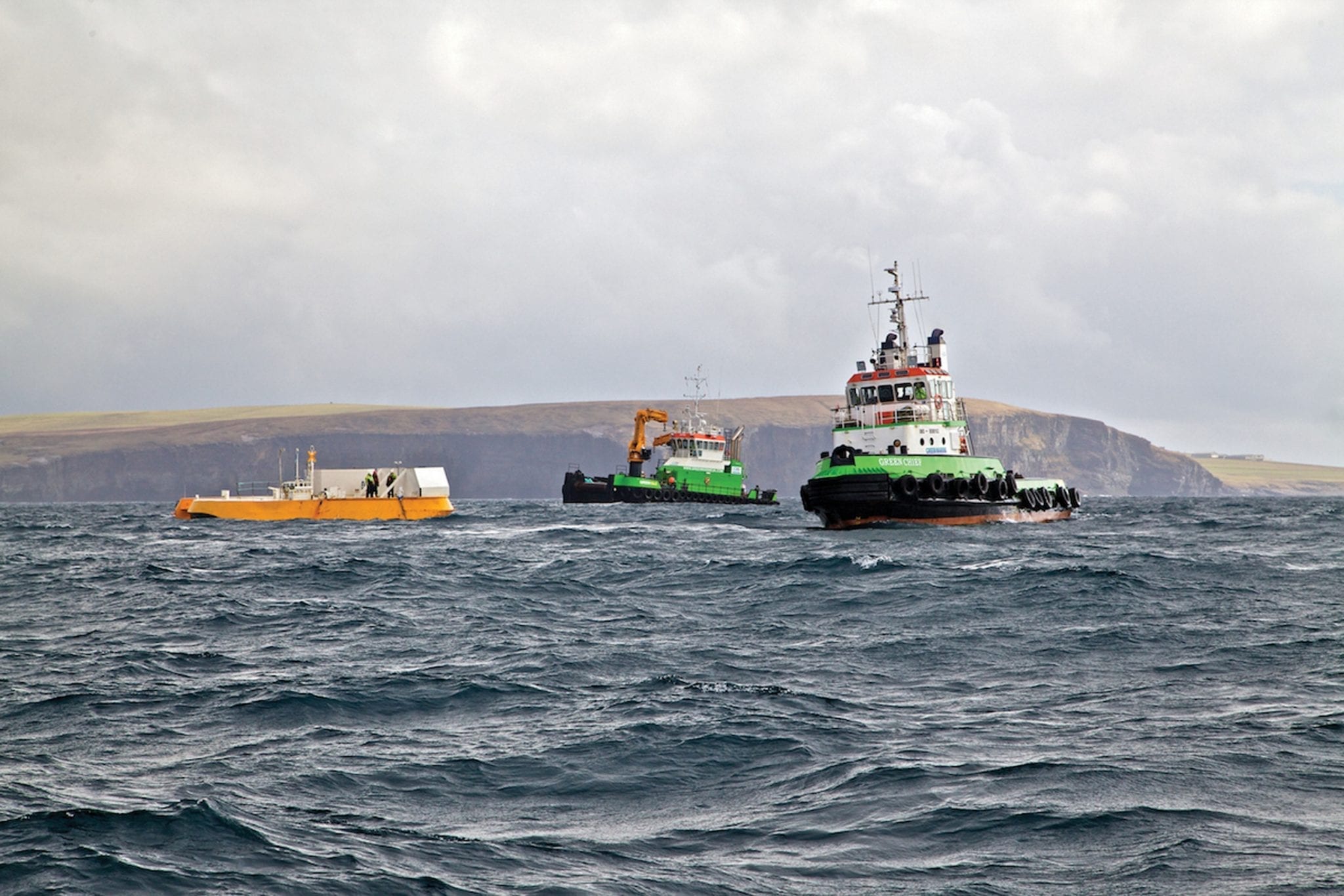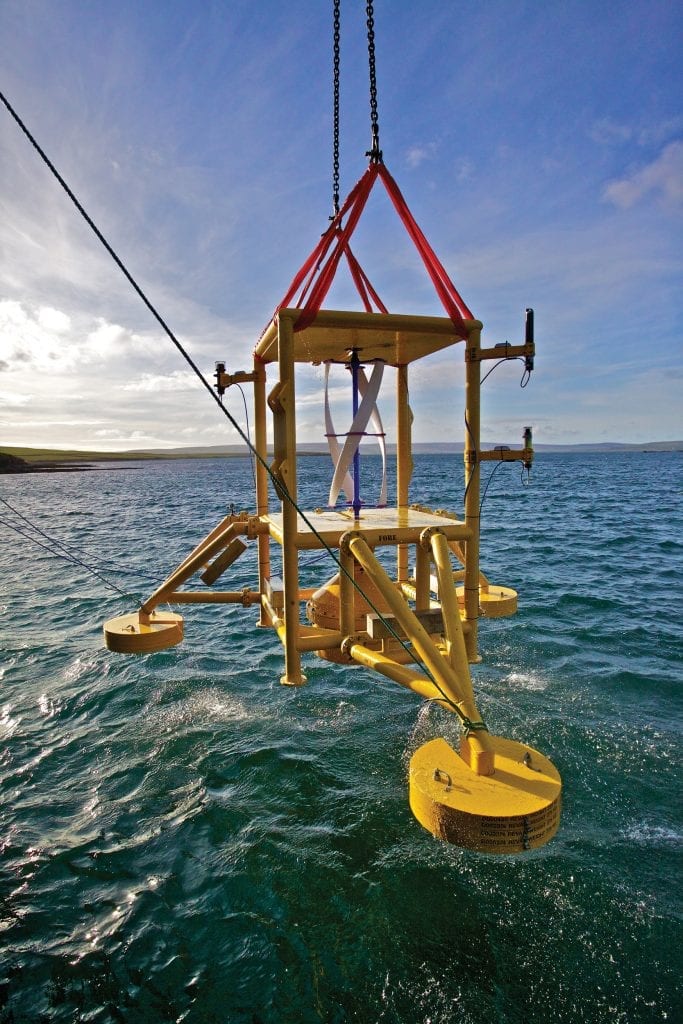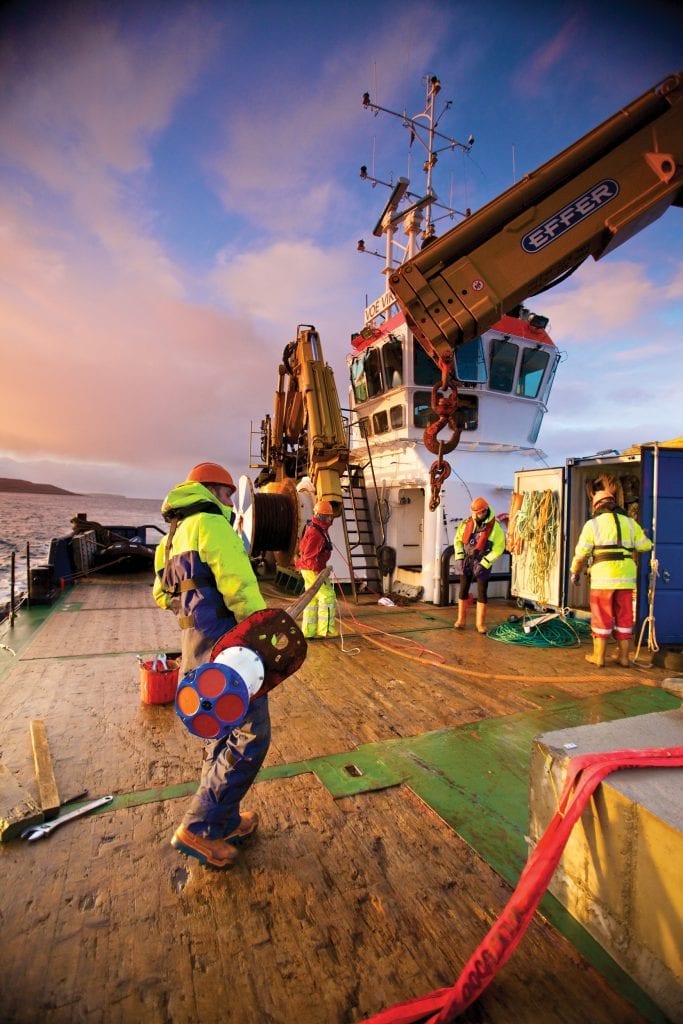Energy Futures at the Edge of the World
Europe’s energy future is already a reality on Scotland’s remote Orkney islands, where cutting-edge renewable energy systems in wave and hydrogen energy are just some of the many innovations that the islanders (‘Orcadians’) have adopted ahead of mainland Europe.
Note to reader: This article is an abridged extract from Energy at the End of the World: An Orkney Islands Saga by Laura Watts.
We are a company of poets, exploring an old electricity test site where Orkney electrons were generated half a century ago. Our local guide is Alistair Peebles, an Orkney-based artist and writer. The third person, Alec Finlay, Scottish artist and poet, is bagging and tagging renewable energy landscapes. Together, the three of us seek a mythical location, the first of the many renewable energy test sites in the islands: Costa Head.
We stop the car on the north-east coastal road of West Mainland and begin our hike up the side of the hill. A winding tractor track takes us up through incurious cows and onto a headland. On the far side, the hill drops hard into the sea. We pause with cameras, notebook, and pencils and take in the striking view along the coast. The air is light and high and glorious. Along the heather-brown ridge, we see distant wind turbines working the air. Over the narrow sound, dark Rousay rises. Alec writes a short poem on a packaging tag in response. He ties it to the rusted remains of a fence and Alistair takes a photograph of the impromptu poetry installation — the poem flapping, the turbines catching the wind behind. We walk on.
On the scrubby summit of the headland there is an abandoned flat-roofed bunker, windows empty from long years of wind and rain. I peer inside the bunker and see the concrete walls are painted green with moss. Resting beside the open doorway is a slate painted with the words View Point. Today it speaks true and I spend some time watching sacred Eynhallow below (the little holy island left for birds, ruins, and the fairy finn-folk), which rests in the sea between us and Rousay.

50 years of sustainable energy projects
Somewhere, amongst the buildings and broken old naval defenses from the Second World War, must be what we came for. Somewhere here on Costa Head, there are the remnants of the UK’s first experimental wind turbine, built and installed in the early 1950s. The North of Scotland Hydro-Electric Board sponsored the 100 kilowatt wind turbine, installed here on Costa Head in 1951. The structure seems to have struggled in the intense Orkney wind and collapsed after operating for just a short time.
We stand on the hallowed hill where sustainable Orkney electrons began their saga, long ago. I write a memorial poem: mica encrusted tomb to an unknown turbine
Here lie the remains of the Energy Islands’ first renewable energy test site. For so long, Orkney has been chosen as the national and international laboratory for testing experimental sustainable energy devices. The islands have been a test site for sustainable energy generation for more than half a century.
I count the test sites. We stand on Costa Head, the UK’s first site from the 1950s. From here I can see Burgar Hill, the site of the UK’s largest experimental wind turbine in the 1980s. In Kirkwall, I have seen the silver boxes in the SSE car park that contain the UK’s first national grid battery. Somewhere in those buildings, too, are the smarts that manage the UK’s first ANM (active network management) system. Down the street to Kirkwall harbor, I can find the hydrogen fuel cells converting electricity made by tide energy turbines and a community wind turbine, which must be a world first.

Then, off the coast, I can see the European Marine Energy Centre grid-connected wave and tide energy test sites, established in 2003 and another world first. The list could also include a myriad of quieter community-led sustainable energy projects, no less significant to the Energy Islands—from the hydrogen fuel, to the individual investments in electric cars, to the installation of Tesla Powerwall home batteries and photovoltaic panels in affordable housing in the islands.
There is a tension between this extraordinary list of Orkney electron test sites, some celebrated for their national and international significance, and the failure to address the crippling transmission charge and the constrained grid. When the UK National Infrastructure Commission released its roadmap for the future development of the national grid, it ignored the grid futures being made in Orkney.
The Orkney islands have been a test site for sustainable energy generation for more than 50 years.
Islands at the edge are often overlooked as sites of technological innovation. The chair of the Orkney Renewable Energy Forum (OREF) attempted to transform this perception to representatives visiting from the National Grid: “We are keen to show how it all works here. Orkney is a living laboratory for a sustainable energy system. We aren’t there yet, but we a lot closer than most, and we have valuable insight into what works and what doesn’t.”
A living laboratory
The phrase “living laboratory” has been circulating in the islands as a brand to promote them as a living test site, with its long test site history embedded in the story. Used in conversation with the National Grid representatives, it is intended to evoke the islands as a lived experimental energy future.
But “living laboratory” also carries within in it some serious tensions. The islands are both a significant national energy test site and an overlooked energy region, a paradox exemplified by the energy operator, SSE, which celebrates and uses the islands as a test site for its smart grid technology, while abandoning them to a cable-constrained grid.
When I have talked about the islands as a “living laboratory” to people in Orkney, there is a simultaneous agreement that this seems right, capturing the inspirational qualities in the place, along with a strong aversion to being seen as a “lab rat.”


Right: Subsea Power Hub at EMEC. Photo: EC-OG / Left: Orkney Vessel Trials project. Photo: Aquaters
Orkney islanders’ ambivalence to being a living laboratory is understandable. The energy operator SSE can be seen in imperialist mode as it uses the Energy Islands as a test site while failing to demonstrate an understanding of what it means when community wind turbines are “knocked off” the stacking system and cannot generate revenue, and the overall effect on islanders’ lives.
So, why might the islanders continue to call themselves a “living laboratory,” as they are doing? How to counter the colonial tensions that come with this label? An Orkney-based journalist suggested some answers when he wrote in the newspaper, “With a constrained electricity grid, and an excess of renewable energy, Orkney is already attempting to tackle the kind of energy management challenges that the rest of Europe could have to face in the future.”
Orkney is tackling the energy management challenges that the rest of Europe will face in the future.
The coming electric world
The challenge of being a living laboratory is being turned into a double advantage. Firstly, the constrained electricity grid is being transformed into a future that “the rest of Europe could have to face” as European electricity networks also move to renewable energy. In this way, the marginalization that the Energy Islands experience on the grid becomes indicative of a coming, constrained electric world.
Energy Islands, with their local wind turbines and electric cars, are living this future, even if those making it do not realize this, yet. The second advantage is that islands are not separated or isolated by the sea, like a Petri dish, but connected to other maritime locations worldwide.
The Energy Islands work in collaboration with organizations such as the National Taiwan Ocean University and the Ocean Energy Association of Japan, with whom they have been collaborating on marine energy testing. Those maritime places are also experimental, making their own energy futures.
In another example, the SMart IsLand Energy Systems (SMILE) consortium, which is testing microgeneration and smart metering technologies, is being led by three islands: Madeira, Orkney and Samsø. In these experiments, Orkney is not serving some colonial power, but connected undersea with places where they become a living laboratory with different politics. Rather than Orkney being the test site used by other islands, they all become one archipelago of test sites, thinking and working together.
Through brine-transmitted relationships that make an ebbing and flowing ‘archipelagraphy’ (as Elizabeth DeLoughrey calls it) over the ocean earth—with Madeira, Taiwan, Japan—the Energy Islands create connections for Orkney electrons that do not require grid-limited cables. Orkney electrons are generated as a result of these energy research projects but so, too, are other island electrons. The Energy Islands become a living laboratory in an ocean of living laboratories, each one with unique expertise and learning to be shared. In essence, the question becomes—who is this living laboratory for?
The Energy Islands are a living test site for many sustainable energy futures and have been for fifty or more years, counting back from the Costa Head turbine. With their self-determined, community-led projects, such as hydrogen fuel generation, they are experimenting with their own grid and finding ways to generate income. They are open for business as a living laboratory for those who collaborate with them as an archipelago, not for those who colonize them with their experiments; and they are, of course, a living laboratory for themselves.